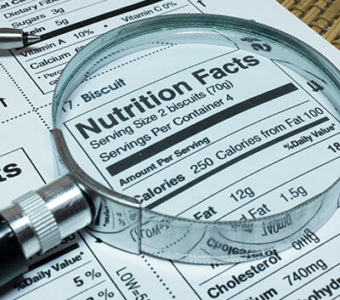Eggs are tasty, easy to make and a good source of protein. But how do you make sure you’re buying the healthiest option? There are so many different kinds out there, and most cartons are plastered in marketing terms. We can help you separate the jargon from the facts.
Cage-Free? Free-Range? What Does It All Mean?
To begin, we need to dig into the “not so glamorous” egg industry. Most of the eggs you find in a grocery store come from something that resembles a factory more than a farm. Thousands upon thousands of chickens are kept in tiny cages that don’t allow them room to spread their wings, much less walk around. Many never even see the light of day. Not a happy image, I know.
There are some companies that use different methods. But unfortunately, there are also companies that just want to make you think they’re using different methods by slapping on terms that are either misleading or complete nonsense.
Your Guide to Buying Eggs
If you’re going cross-eyed in the egg aisle, here’s a reference to help you make sense of the most common terms. You can also check out this quick-reference visual guide to egg carton labels. Also, be sure to read our Decoding Meat Labels blog to help you continue on your healthy eating journey.
1. Cage-Free
The good news is, “cage-free” means the chickens are not kept in cages. The bad news is, they’re probably still living in an incredibly overcrowded factory-like building where they have about one square foot of space and no access to the outdoors.
2. Free-Range / Free-Roam
“Free-range/free-roam” means that the chickens are not kept in cages and they technically have access to the outdoors. However, there are no regulations around the term “free range” when it comes to eggs. Often, these chickens have access to a few small doors that lead to a tiny patch of dirt outside, and sometimes the time they’re able to spend outside is limited.
3. Pasture-Raised / Alfresco
If you like the idea of chickens roaming around on a farm, pecking at the ground and basking in the sun, then pasture-raised is the choice for you. These chickens get to spend most of their lives outdoors and have access to a spacious barn. Most get to eat their natural diet of worms, insects and grass and may also be given corn feed. Sometimes you’ll see the term “alfresco,” which means the eggs came from pasture-raised chickens who ate their natural diet. It’s important to keep in mind that “pasture-raised” is not a legal term, so you may want to do a little research. (See humanely-raised below.)
4. Humanely-Raised / Certified Humane / Animal Welfare Approved
Unfortunately, there’s no legal standard for “humane” treatment in this arena. But there are some third-party organizations who offer certifications for producers that can meet rigid standards, like how much space the chickens get, how much time they have outdoors and how they are treated. Different certifications mean different things, so do your research before blindly trusting a certification. Here are some respected certifications to check out: Certified Humane®, Animal Welfare Approved, Global Animal Partnership or American Humane Certified.
5. Organic
Good news! “Organic” is a legal term that can only be used on eggs that meet very specific USDA standards. For eggs to be labeled “organic,” they must come from cage-free, free-range chickens who have been given no hormones or antibiotics, and are fed organic feed. This is the only egg carton label that the U.S. government regulates.
6. Vegetarian Diet
Many of us would think of a vegetarian diet as being a good thing. But considering chickens are omnivores, it means that they’re not eating their “natural diet.” In a natural state, chickens eat mostly worms, bugs and insects. If a chicken is eating a vegetarian diet, it’s probably being fed corn fortified with amino acids. So, in this case, “vegetarian diet” is actually a con instead of a pro.
7. Omega-3
Omega-3 is a good thing. Typically, if “omega-3” is touted on the label, it means that the chickens were fed corn feed with a little flaxseed mixed in. However, pasture-raised chickens eating their natural diet would also have omega-3 in their eggs.
8. No Antibiotics
This label doesn’t mean much because antibiotics are rarely used in the egg industry.
9. No Hormones
It’s illegal to give hormones to chicken or other poultry in the U.S. So, this label means absolutely nothing.
10. Natural
“Natural” is another nonsense label when it comes to eggs. All eggs are a “natural food.”
11. Farm Fresh
Sometimes in marketing, they just want to create a pleasant connection in the minds of their consumers. “Farm fresh” does just that. It sounds great, but means nothing.
12. Brown Eggs vs. White Eggs
OK, so this one is not so much a term, but it’s still worth mentioning. There is no quality or health difference between white and brown eggs. The color is determined solely by the breed of chicken who laid it.
Looking for more help reading labels? Check out our lesson.






